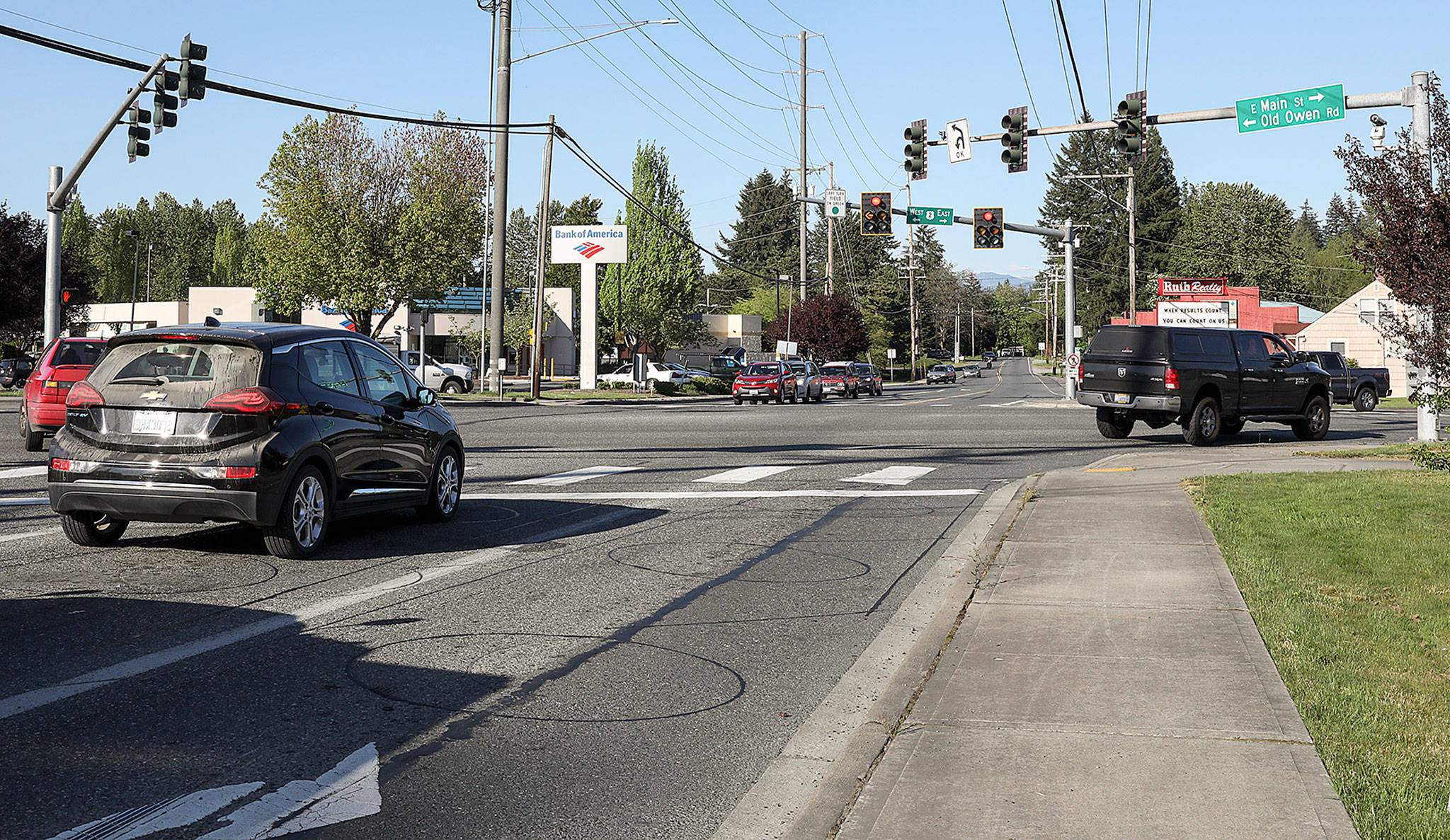There’s nothing more frustrating than a long wait at a traffic light, except when the line of cross traffic has ended and the green light is going unused.
Anita and Richard Esser wrote in with a question about traffic light timing at the corner of Old Owen Road and U.S. 2 in Sultan. The Sultan residents said they’ve had to wait 5 to 6 minutes on Old Owen Road before they get a green and can turn onto U.S. 2.
“This is terrible, and so not necessary. More than once or twice or three times we have had to wait for the light to change, when there weren’t any cars coming in either direction. We know the reason is to keep the cars on (U.S.) 2 to be able to keep on going, and also to not have them stacking up in Sultan, but it needs to change sooner when there is a gap in traffic,” the couple wrote in an email.
I passed the comment on to Washington State Department of Transportation spokesperson Joseph Calabro. I also asked him to explain how timing at intersections is determined by the agency.
His response:
U.S. 2 through Sultan has a historically high demand that exceeds its vehicle-carrying capacity. This demand has grown steadily over the years, with another 200,000 people projected to move to Snohomish County in the next 15 years. The demand currently peaks on weekends when drivers head east on Thursday or Friday, then return west on Sunday. This peak is most noticeable during holiday weekends. When signal timings are set, the general rule is to allocate green times relative to the vehicle volumes approaching the intersection. In Sultan, we are balancing heavy demand on U.S. 2 with much lower traffic volumes coming from side streets. If we did not, driver delays on U.S. 2 would be much higher than they already are.
Current signal times
Right now, the weekend signal cycle for the intersection at Old Owen Road is approximately four minutes and 30 seconds. This signal setting was last changed on July 28, 2017 to keep up with ever-increasing demand for the east-west users on U.S. 2. The maximum green times on U.S. 2 are significantly less during the weekday.
Length of the green
The maximum green value is programmed in and can vary based on what plan is being called for it. We have different plans with different maximum greens for weekday mornings and evenings, weekends and off-peak hours.
The green time for any direction can vary up to a maximum value. For example, let’s say the maximum green value is 40 seconds. If a vehicle drives over a loop detector (wire embedded in the road that senses a vehicle presence) the computer will keep the light green. If vehicles continue to move over the loop, the light will stay green until the maximum value is reached, at which point it will terminate. If no vehicles cross over the loop detector at any time between 3 seconds (minimum green) and 40 seconds (maximum green), the light will terminate.
Determining signal times
We typically use a traffic modelling program to determine the most efficient signal timing. Unfortunately, when a signal operates under over-saturated conditions, (as is the case in Sultan on weekends), model output is less reliable. In these instances, engineering judgment is used to provide each approach with a reasonable wait time.
(Editor’s note: Over-saturated conditions means there are more cars than the road can handle.)
Future improvements
While there are plans to expand the number of lanes on U.S. 2 along this segment, there is currently no funding to build them. As with all major WSDOT capital projects, the Legislature needs to specifically provide funding for them in the state’s transportation program.
Got a question? Email me at streetsmarts@heraldnet.com or call 425-374-4165. Please include your name and city of residence.
Talk to us
> Give us your news tips.
> Send us a letter to the editor.
> More Herald contact information.

























